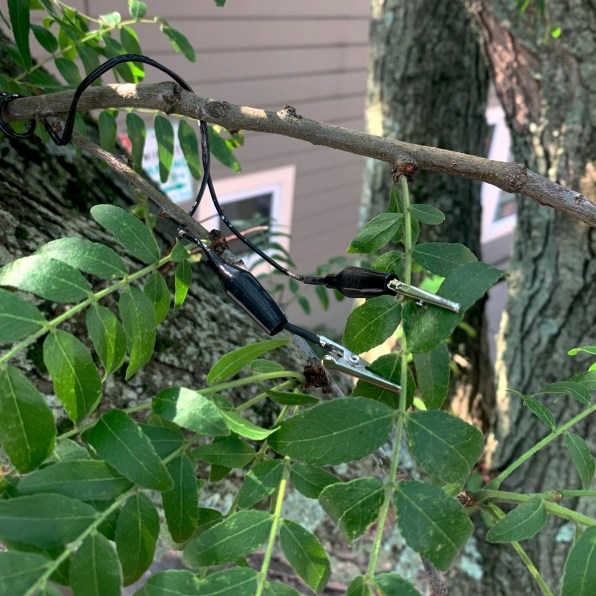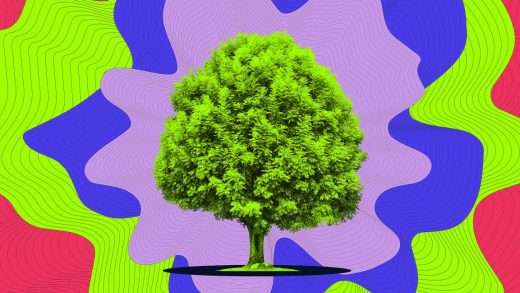This radio station plays songs made by trees as they grow
As the tree photosynthesizes and absorbs and evaporates water, a solar-powered sensor attached to a leaf measures the micro voltage of all that invisible activity. Sound designer and musician Skooby Laposky assigned a key and note range to those changes in this electric activity, turning the tree’s everyday biological processes into an ethereal song.
That music is available on Hidden Life Radio, an art project by Laposky, with assistance from the Cambridge Department of Public Works Urban Forestry, and funded in part by a grant from the Cambridge Arts Council. Hidden Life Radio also features the musical sounds of two other Cambridge trees: a honey locust and a red oak, both located outside of other Cambridge library branches. The sensors on these trees are solar-powered biodata sonification kits, a technology that has allowed people to turn all sorts of plant activity into music.

Laposky had previously used biodata sonification to create a live performance based on plants in the courtyard of Boston’s Isabella Stewart Gardner Museum. It was when someone mentioned Cambridge’s disappearing tree canopy, and then after he read the book The Hidden Life of Trees, that Laposky thought to tune into the music trees could be making. The name Hidden Life Radio was inspired by that book, written by German forester Peter Wohlleben, which details the social networks and “sentient” capabilities of trees.
“Most people probably love trees and [still] don’t consider them all the time,” Laposky says, noting a condition called “plant blindness,” in which people fail to notice the flora in their own environment. “In cities, the trees are there, but unless they’re providing shade or you’re picking apples from them, I feel like people don’t necessarily consider trees and their importance.”
Between 2009 and 2014, the city of Cambridge was losing about 16.4 acres of canopy annually—enough, WBUR reported, to “cover 12 football fields.” While the city’s canopy covered 30% of the city in 2009, by 2014 coverage was down to 26%, and officials said it could dip down to around 17% by 2030. Part of the issue comes from urban development, and trees being cut down to make way for housing, parking spots, and so on. Trees are also cut down because of pests and disease. Across the country, urban tree canopy has been declining, but tree canopies are crucial to cities, providing shade that can lower summer temperatures significantly, reducing air pollution, sequestering carbon, and providing a mental health benefit.
Now, Laposky has created a musical voice for these disappearing trees, and he hopes people tune into Hidden Life Radio and spend time listening to them over time. The music they produce occurs in real time, affected by the weather and whatever the tree is currently doing. Some days they might be silent, especially when there’s been several days without rain, and they’re dehydrated; Laposky is working on adding an archive that includes weather information, so people can go back and hear what the trees sound like on different days, under different conditions. The radio will play 24 hours a day until November, when the leaves will drop—a “natural cycle for the project to end,” Laposky says, “when there aren’t any leaves to connect to anymore.”
(66)



